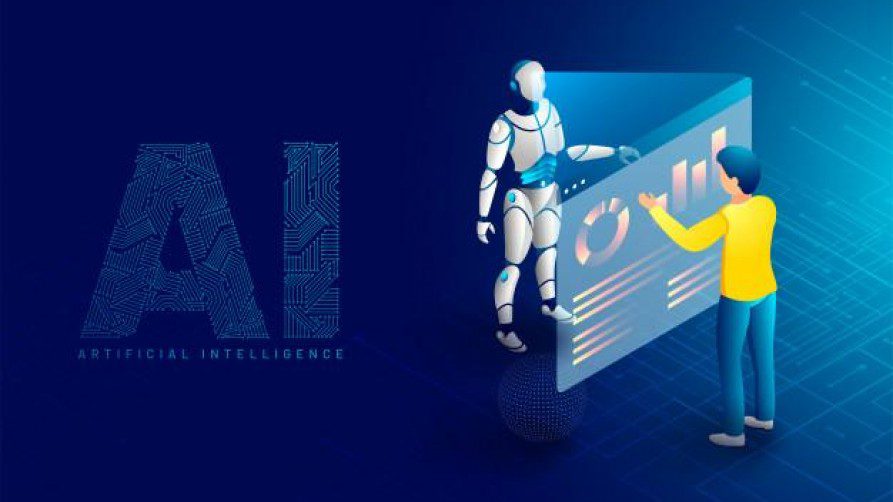In recent years, digital transformation has been drastically reshaping numerous industries and shifting the way businesses operate. A blend of technology, innovation, and new work dynamics influences how companies remain competitive and efficient. In this blog post, we explore the latest trends in the digital landscape and provide insights on how businesses should adapt these changes for a productive and innovative workplace.

The Rise of Remote Work
The COVID-19 pandemic has pushed the boundaries of workplace norms, emphasizing the need to adapt to remote work as a necessity, rather than a luxury. Companies have been seeking innovative ways to maintain productivity and communication among their employees. Remote work has demonstrated various benefits such as talent retention, increased productivity, and cost savings. With the widespread implementation of remote work, businesses must be prepared to embrace digital tools and technologies to ensure smooth operations.
Upskilling and Reskilling
The rapid advancements in technology demand a workforce that can confidently navigate the digital landscape. By investing in upskilling and reskilling, businesses can foster agility and adaptability among their employees, creating an innovative work culture. Employers must prioritize skill development through online courses, workshops, and mentoring to prepare employees for the digital age and the ever-changing roles in the modern workplace.
Automation and Efficiency
The digital shift has propelled companies to implement automation processes, thus minimizing the need for manual intervention. Automation technologies and tools can assist businesses in reducing redundancies and eliminating errors while streamlining time-consuming processes. This translates into increased efficiency and productivity, allowing employees to focus on innovation. Companies must explore ways to automate tasks that do not require human judgment, leading to a more efficient workforce.
One aspect of automation that has gained significant traction in recent years is HR process automation. By automating repetitive HR tasks, businesses can save time, reduce errors, and allow HR professionals to focus on more strategic initiatives, such as talent development and employee engagement. Adopting HR process automation is crucial to building a more productive and innovative work environment.
Cybersecurity and Data Privacy
The digital transformation has increased the reliance on digital tools and platforms, amplifying concerns of data privacy and security. As businesses shift their operations to digital platforms, safeguarding sensitive information from evolving threats is of paramount importance. Companies must establish robust security measures, including regular risk assessments, multi-factor authentication, and threat mitigation plans to protect their assets and enhance customer trust.
Customer-Centric Approach
As the digital landscape continues to evolve, so do customer expectations. In order to remain competitive, businesses must focus on delivering exceptional experiences that cater to the needs of their clientele. Adopting a customer-centric approach involves understanding customer preferences, investing in cutting-edge technologies, and fine-tuning processes to improve service quality and customer satisfaction.
Digital Collaboration Platforms
As remote work becomes the standard, collaboration tools and platforms are on the rise. These solutions allow employees to communicate, share files, and collaborate on tasks with ease, irrespective of their physical location. Companies must explore options like project management software, video conferencing tools, and instant messaging solutions to foster a collaborative work environment. Embracing these tools enables a fluid shift to new work dynamics while keeping employees engaged and efficient.
Building a Culture of Innovation
An organization that embraces the digital shift must also foster a culture of innovation. By encouraging creative thinking, experimentation, and new ideas, businesses can drive innovation in their products, services, and processes. Developing an environment where employees feel empowered to share their ideas without fear of failure can significantly contribute to organizational growth and differentiation in the marketplace.
Embracing Change and Staying Agile
The digital landscape is ever-evolving, and businesses must constantly adapt to stay ahead. Building an agile organization requires adaptiveness to change, open-mindedness, and a willingness to embrace new methods and technologies. By recognizing the inevitability of change and planning for it, companies can chart a course for success in a continuously transforming digital world.
Data-Driven Decision Making
Technological advancements and increased connectivity have made it easier for businesses to collect data from various sources, including social media, customer interactions, and third-party providers. Companies must harness this abundance of information to inform critical decisions and identify new opportunities. Integrating data analytics with business intelligence software permits organizations to derive actionable insights from their data, leading to improved decision-making and accelerated innovation.
Conclusion
Embracing the digital shift is no longer a choice but a necessity for businesses wanting to thrive in a competitive landscape. By committing to new work dynamics, businesses can build a resilient and future-ready organization. This commitment entails the adoption of digital collaboration tools, informed decision-making, automation, skill development, and increased emphasis on cybersecurity. As the digital landscape continues to evolve, so must companies adapt to remain relevant and successful in the age of digital transformation.








